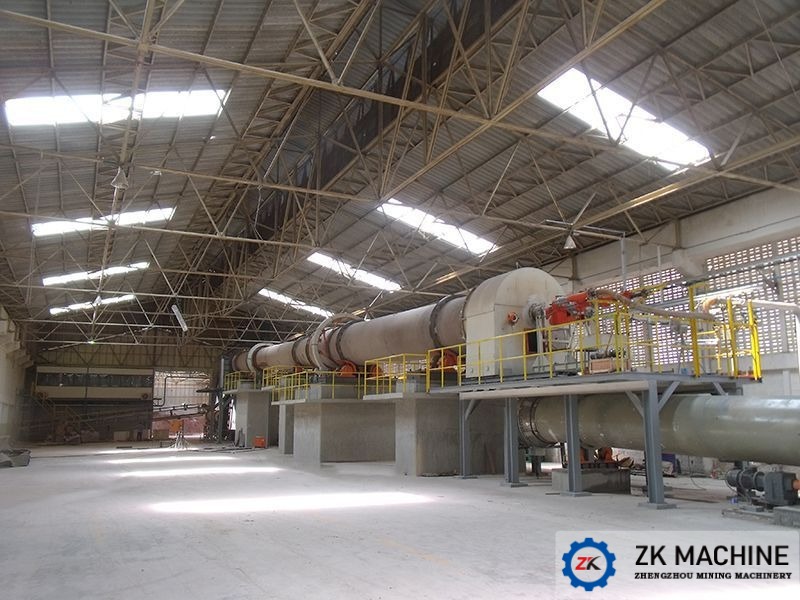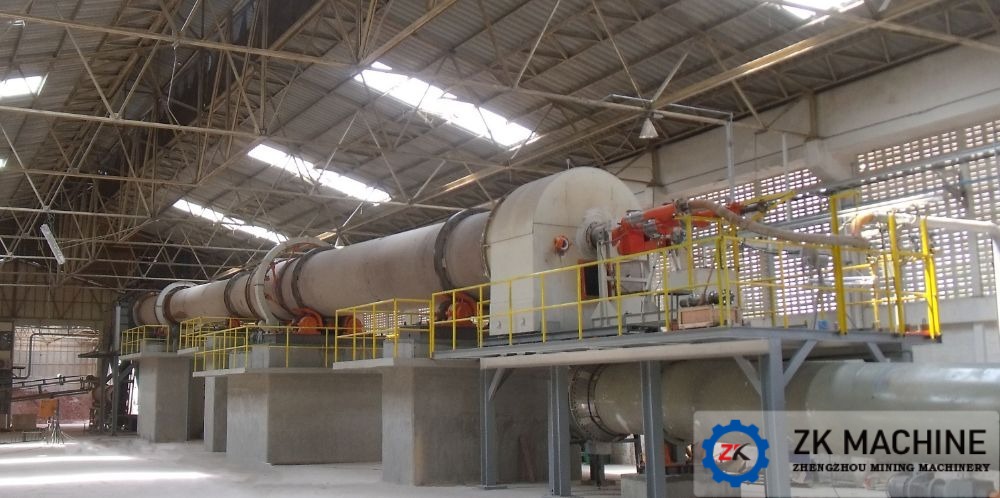I. Project Overview
Signing Date: 2015-10.10
Processing Material: Clay
Processing Capacity: 30,000 cubic meters/year.
Complete Set of Equipment: Rotary Kiln, Double Shaft Mixer, Roller Crusher, Molding Machine, Single Drum Cooler, Belt Conveyor, etc.
Thai Building Materials Co., Ltd. has an annual production capacity of 30,000 square meters of building expanded clay production line. After three months of mutual review, business and technical negotiations between the two parties, our company was determined as the lead unit in October 2015. The general contractor is responsible for the design, manufacture, installation, commissioning and other work of all project equipment. The project mainly uses clay as raw material, and is processed into clay expanded clay products through processes such as stone removal, crushing, granulation, molding, preheating, calcination, cooling, and sorting. The annual design production capacity is 50,000 cubic meters. As our company has rich experience and mature technology in the field of expanded clay, the circuit design, manufacture, installation and commissioning of the equipment are smoothly implemented in accordance with the agreed plan and requirements. All technical and economic indicators meet the standards and have passed the acceptance.

The entire production line adopts an advanced DCS control system. Operators can monitor the status of each device in real time and monitor the entire production line from the central control room. The system can automatically adjust the circuits of each device based on temperature, pressure, and flow feedback. In addition, each device is equipped with a ground control cabinet for easy maintenance, adjustment, and emergency disposal.
2. Solution
The project is an annual production line of 50,000 cubic meters of expanded clay. It uses highly reliable and technologically advanced design solutions to feed, batch, crush, mix, granulate, mold, calcine, and cool expanded clay products.
1) The feeding and batching system consists of a silo, a plate feeder, and an electronic belt scale. The feeder conveys the material to the hopper. After passing through the apron feeder, it enters the electronic belt scale for metering, and then the material is sent to the crushing system through a conveyor belt.
2) The crushing system consists of a rod crusher and two roller crushers. The material first enters the rod crusher for coarse crushing, and then enters the two roller crushers for fine crushing. Two roller crushers are arranged in series. The finely ground material enters the mixing system through a conveyor belt.
3) The mixing system consists of two twin-horizontal shaft mixers in series. The finely ground material is mixed evenly in the twin-shaft mixer under the action of the mixing blades. The tap is equipped with a water supply system to add the appropriate amount of water. The moisture content in the material used for the subsequent production of balls.
4) The granulation system mainly consists of a two-roll granulator, which granulates the material with appropriate moisture and uniform mixing to form short columnar particles, which enter the molding system through a conveyor belt.
5) The molding system is a molding machine. The material is continuously turned in the molding machine. The friction between the material and the cylinder and between the material and the material removes the edges and corners to form approximately spherical particles.
6) The firing system consists of a dryer, a rotary kiln and a burner. The molded material enters the dryer through a wide-angle belt conveyor and then enters the rotary kiln. The temperature in the oven reaches 1200 degrees. The burner is an oil and gas dual-purpose burner, which is energy-saving and highly flexible.
7) The cooling system consists of a rotary cooler. The calcined material is cooled, and the discharge temperature is 50 degrees higher than the ambient temperature.
8) The screening system is a drum screen. The cooled material is processed by the drum screen to form a pile of particles of different sizes.






















